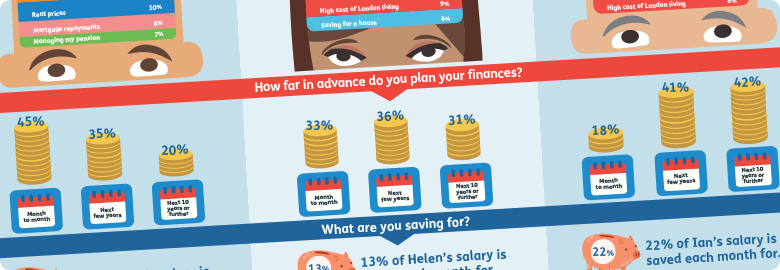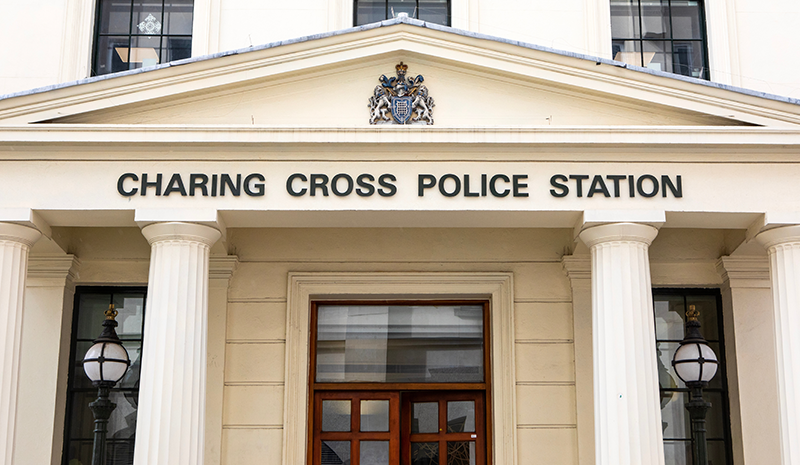It’s coming to the end of August and, despite the pandemic, for many of us its traditionally the time for family holidays and ice cream at the seaside. This month rather than talking about flavours of ice cream (Häagen-Dazs Salted Caramel for me!), I’ve been asked by a friend about different flavours of ISA.
The question she asked me was: “I’ve got a Cash ISA which is maturing soon and I want to understand my options better. I would usually transfer it to another Cash ISA but the rates on offer are very low and in most cases below inflation. I know that to get a better return I might need to take some risk, but am a bit worried about it as I’ve heard the stock market is not doing so well. What do I need to consider?”
What is an ISA?
ISA stands for Individual Savings Account. ISAs first became available on 6th April 1999 and benefit from being tax free, which means that they are exempt from UK Income Tax and Capital Gains Tax.
They are very popular with latest HMRC statistics suggesting that Adult ISA holdings stood at £584 billion and 11 million Adult ISA accounts were subscribed to in 2018-19.
Source: https://www.gov.uk/government/statistics/individual-savings-account-statistics.
There are four types of ISA:
- Cash ISAs
- Stocks and Shares ISAs
- Innovative finance ISAs
- Lifetime ISAs
You can put money into one of each kind of ISA each tax year. To open an ISA you must be a UK resident and 16 or over for a Cash ISA, or 18 or over for other types of ISA. You cannot hold an ISA with or on behalf of someone else. There are also Junior ISAs for children under 18.
Cash ISAs
Think of a Cash ISA as plain vanilla ice cream. The return you get could be a variable rate for an easy access account or a fixed rate if you are tying up your savings for longer.
All cash savings interest is now paid gross and if you are a basic rate taxpayer, interest is tax free up to a limit of £1,000 each year. For a higher rate taxpayer the tax free limit is £500 but a 45% rate taxpayer must pay tax on all their interest.
At the time of writing, cash savings accounts are paying higher rates than Cash ISAs so most people will be better off saving in a normal savings account. The exceptions to this are 45% rate taxpayers and those that have large amounts of savings that exceed the tax free interest limits.
As interest rates are currently low, the real value of your savings could be eroded by inflation. The Consumer Prices Index including owner occupiers’ housing costs (CPIH) 12-month inflation rate was 1.1% in July 2020. This means you currently need to earn a rate higher than 1.1% to beat inflation.
Stocks and Shares ISA
Stocks and Shares ISAs come in a variety of flavours and can include shares in companies, unit trusts, investment funds, corporate bonds and government bonds.
Stocks and Shares ISAs carry a higher risk than a Cash ISA and have a higher potential return, depending on where your money is invested. Some allow you to choose from a wide range of funds or individual stocks and shares and others, like the Metfriendly ISA, are invested in a single fund.
If you have a choice of fund, then it is important that you understand the risks you are taking. The provider’s documentation will show the level of risk rated on a scale between 1 (low risk) to 7 (high risk). Thinking of these as ice cream flavours, the range might go from a simple vanilla to rocky road with strawberry, neapolitan, chocolate, mint chocolate chip and coffee in between.
Metfriendly’s ISAs have a risk rating of 3, which is a medium to low risk, and are invested in Metfriendly’s With-Profits Fund. The With-Profits Fund is invested in a diversified portfolio of assets, which is how we balance safety with returns and includes cash, bonds, a multi asset fund and commercial property. Think of it as a neapolitan ice cream, which is a mixture of different flavours.
Innovative finance ISAs
These are a relatively new type of ISA and are an exotic flavour of ice cream such as peppermint bark. They can be invested in peer-to-peer loans, which are loans that you give to other people or businesses without using a bank, and crowdfunding investments, which are investments in a business by buying its debt.
Returns on peer to peer lending will generally be better than on bank deposit accounts, but there is a risk you could lose money if borrowers default or miss repayments. Crowd funding investments are usually in small, start-up companies and so can be high risk. According to the Office for National Statistics (ONS), just 40% of small businesses are still trading after five years.
Lifetime ISA (LISA)
The newest type of ISA is the Lifetime ISA (LISA). Although there is only one type of LISA, it can be invested in cash, stocks and shares or a mixture of both. In addition, it is permitted to change between types of investment over time whilst staying the same LISA.
It is the new kid on the block, like Brownie Macchiato ice cream with a 25% extra free helping! It can be taken out by 18-39 year olds to get on the housing ladder or to build a tax free lump sum payable at age 60. Metfriendly was the first to offer the LISA when it started in 2017.
You can save up to £4,000 per tax year and the Government will add 25%, which is up to £1,000 p.a. As you can make payments up to your 50th birthday this can be a great way of obtaining a very generous government contribution of over £30,000 for a LISA that has been fully funded from the age of 18 to 50.
Metfriendly offers a 1.5% guaranteed annual bonus on contributions invested in the LISA in the 2020/21 tax year. Please note, if you seek to withdraw funds from a Lifetime ISA before age 60 for anything other than a qualifying house purchase, significant government penalties apply.
Transferring your ISA
Returning to the question of transferring a maturing ISA, it is important if you want to maintain the ISA tax benefits to transfer your ISA to a new provider rather than cashing it in. This is because once you’ve cashed it in you lose those tax benefits forever.
If you transfer an ISA that you have paid into during the current tax year to a new provider, you must transfer the whole of the current tax year’s contributions. For ISAs from previous years, you can choose how much to transfer. You can transfer money from a Cash ISA to a Stocks and Shares ISA or to another Cash ISA provider. Check with your provider if there are any restrictions or charges before transferring. If you transfer from a Lifetime ISA to a different ISA before age 60, you’ll have to pay a withdrawal fee of 25%.
Transferring is easy, just complete a transfer form and the new provider will contact your existing provider to arrange the transfer. ISA transfers should take no longer than 15 working days for transfers between Cash ISAs and 30 calendar days for other types of transfer. If you have any questions about transferring an ISA, please contact the Metfriendly team on 01689 891 454 and they will be able to assist you.
The table below shows the pros and cons of each type of ISA.
| Type | Pros | Cons |
| Cash ISA |
Simple Low risk Capital guaranteed |
Low returns Real value may be eroded by inflation over the long term Normal savings accounts may offer higher returns |
| Stocks and Shares ISA – choice of investments / funds |
Higher potential returns than cash Risk will vary depending on investments selected, could be medium/low risk options |
May get back less than what you paid in You need to select the investment(s) / funds - investor takes the investment risk Risk will vary depending on investments selected, could be high risk options |
| Stocks and Shares ISA invested in Metfriendly With-Profits Fund |
Simple, no investment choices to make Capital protected Investment returns smoothed by bonus process Steady middle of the road returns Medium to low risk |
May get back less than what you paid in |
| Innovative Finance ISA | Higher potential returns than cash |
Higher risk than other ISAs as lending to individuals and new businesses May get back less than what you paid in |
| Lifetime ISA | 25% Government Bonus |
May get back less than what you paid in Penalties apply for non-qualifying withdrawals or transfers |
| Lifetime ISA invested in the Metfriendly With-Profits Fund |
25% Government Bonus Simple, no investment choices to make Capital protected Investment returns smoothed by bonus process Steady middle of the road returns Medium to low risk |
May get back less than what you paid in Penalties apply for non-qualifying withdrawals or transfers |
In summary, there are a number of different flavours of ISA to choose from.
Some, like the Lifetime ISA, are an obvious choice due to the 25% government bonus, providing you meet the age and savings criteria.
For others, the right choice for you will depend on your attitude to risk and how much risk you are prepared to take for potentially higher returns, along with tax considerations.
Kathy Byrne, CEO Metfriendly
If you'd like to speak to us about our ISAs, click here, enter a few details and we’ll arrange for someone to call you back at a time convenient for you.
Alternatively if you would like to talk to us in more detail about your financial circumstances, you can book a one-to-one consultation.















































